Immediate spoiler: There isn’t a formula for learning how to paint like Monet. But as Camille Przewodek explains, it’s a way of thinking, “a visual growth about understanding light keys and the relationship between colors on the canvas.”
Camille describes herself as “a plein air colorist” who, “in the representational tradition of Monet, is primarily focused on capturing the light key of nature.” In this guest feature, Camille explains the development of this style of art, what “light keys” are, and how to understand them in a way to help your landscape paintings be masterful. For even more guidance and instruction, don’t miss Camille’s art video workshop, “A Colorist’s Guide to Painting.” ~ Cherie
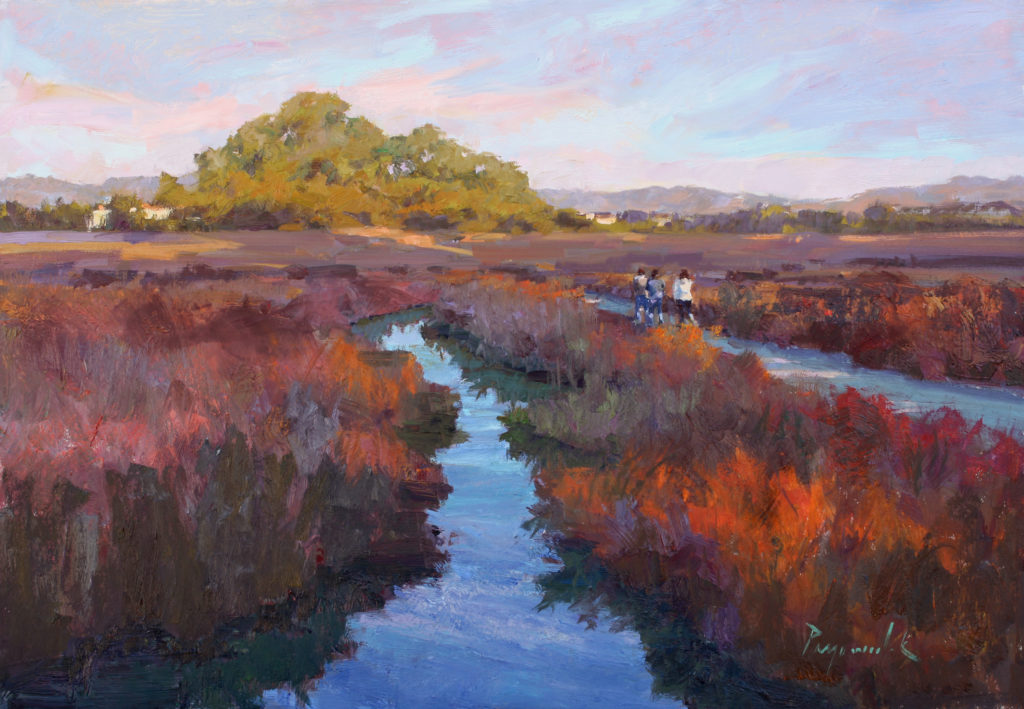
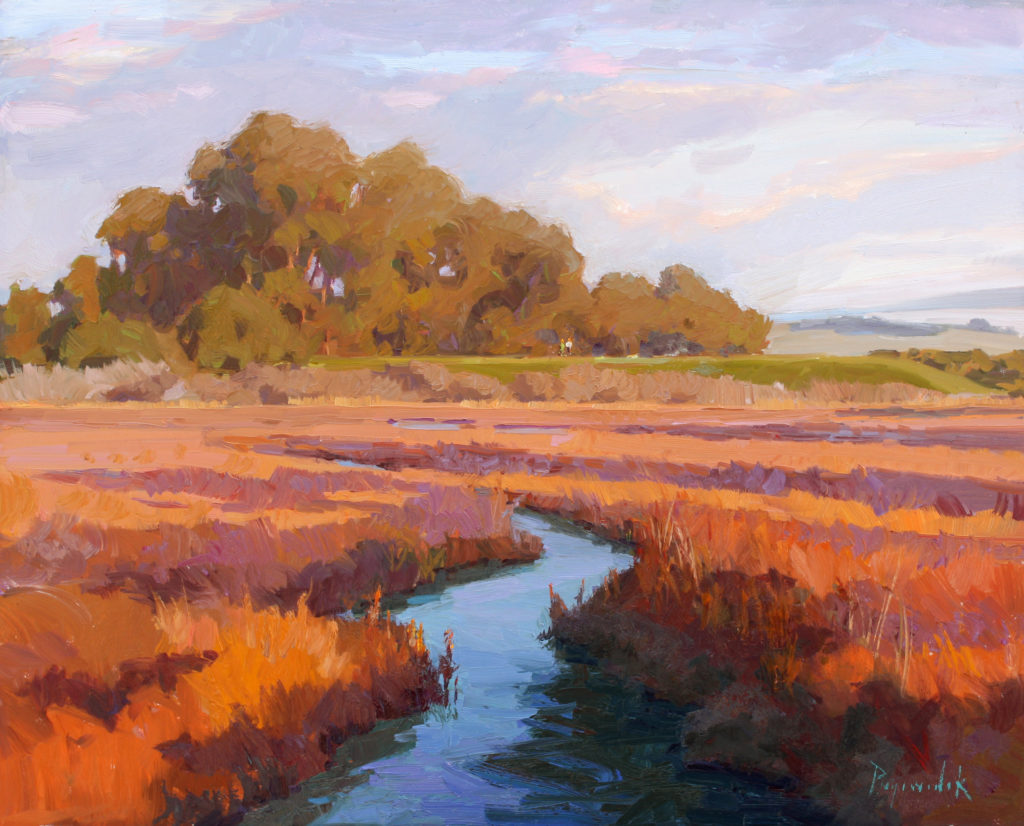
Understanding Light Keys
BY CAMILLE PRZEWODEK
Henry Hensche (1899-1992), a student of Charles Hawthorne’s, developed a way of teaching color in the tradition of Monet. He would have students start out with primary-colored blocks, where you take everything out of the equation and focus only on painting the differences in these color blocks. It is not about painting a finished painting, but studying how to paint the effect of light on objects with pigment. After you master these studies, you can then apply what you have learned to your paintings.
As a side note, I believe Rembrandt would be a colorist today if he was alive. He didn’t have the pigments that Monet had. If you are not using a full palette of color, you aren’t using the technology that is available to artists today.
Hensche was a classically trained artist when he arrived at the Cape School to study with Hawthorne. After he was introduced to Hawthorne, he made it his life’s work to pass on what Hawthorne was teaching. Hensche was encouraged to go modern during the Abstract Expressionist period, but decided not to. If he had gone modern, what Monet was doing would have died, but Hensche kept it alive and taught it for over 50 years.
During the Abstract Expressionist period, there were two major colorist movements that were not popular:
Hensche/Hawthorne and Sergei Bongart. They both were teaching how to paint the light key of nature, and both valued Hawthorne. Hensche was German and dedicated his life to capturing specific light keys of nature. His paintings were more about light keys and less about brushwork. Bongart was Russian and had bravado in his brushstrokes and more expressive paintings.
Light Key of Nature: the specific quality of light on a subject. Hensche stated, “We cannot see anything, except as it exists in the light in which it is seen.” Essentially, what we are painting, then, is not the object or subject in front of us, but the effect of light falling on them. When we refer to light key, we are referring to not only the light, but the collection of variables that modify the light falling on the subject, such as the time and type of day, the prevailing atmospheric conditions, nearby reflecting surfaces, etc. Whether it is sunny or cloudy, morning or afternoon, in the desert, near the ocean, etc.
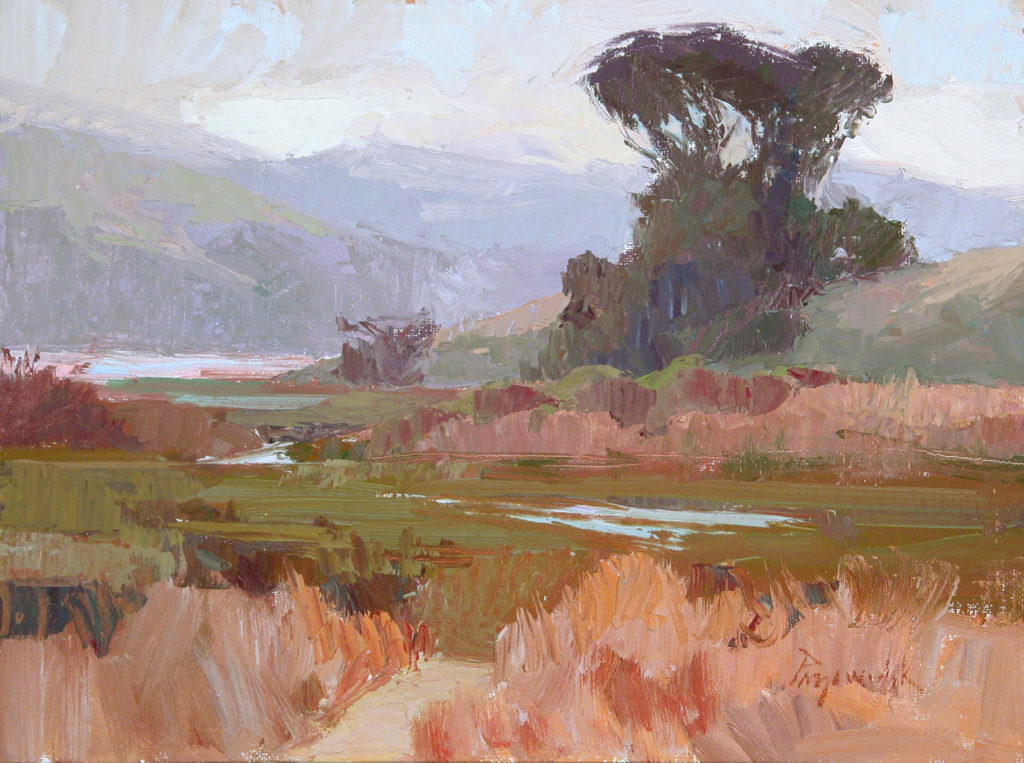
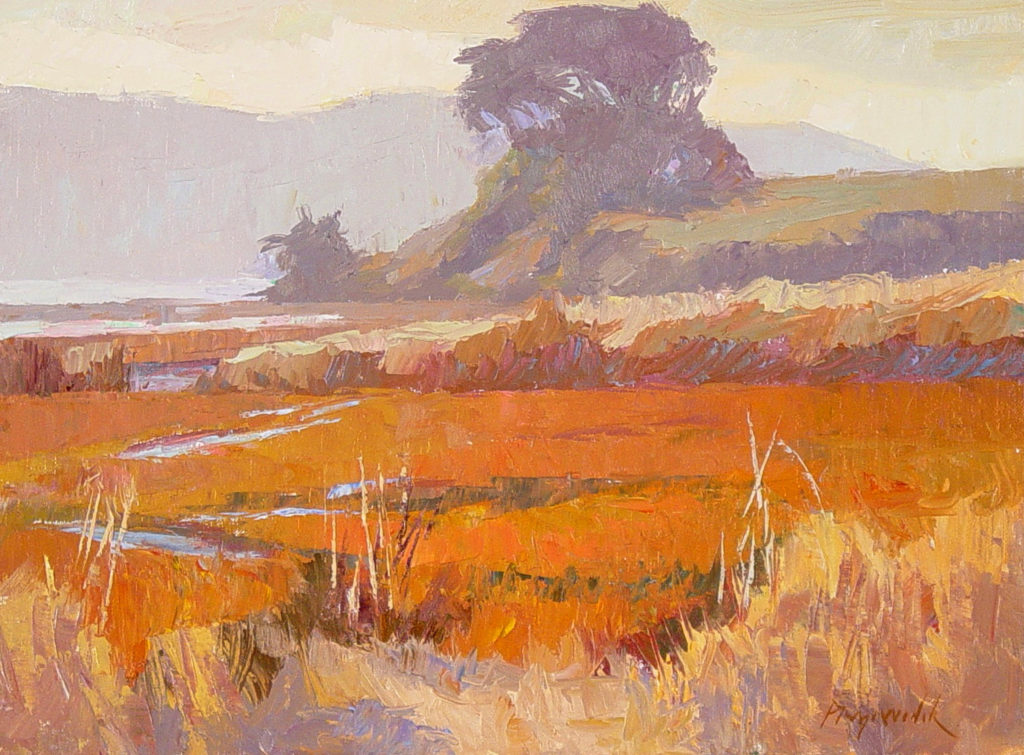
I focus my students on developing their color perception, and it takes years of practice, with good instruction, to develop as a colorist. It takes years of painting on location and developing your color memory.
Students ask me how I get the color or the color harmony in my paintings. My answer is that I start with one color and then I put an adjacent color next to it, and do that until I have covered the canvas. I paint by relating all the colors to one another and painting the differences between each color. There is no limit to the development of your color perception. I am still growing as a colorist, and this is what I love about what I do.
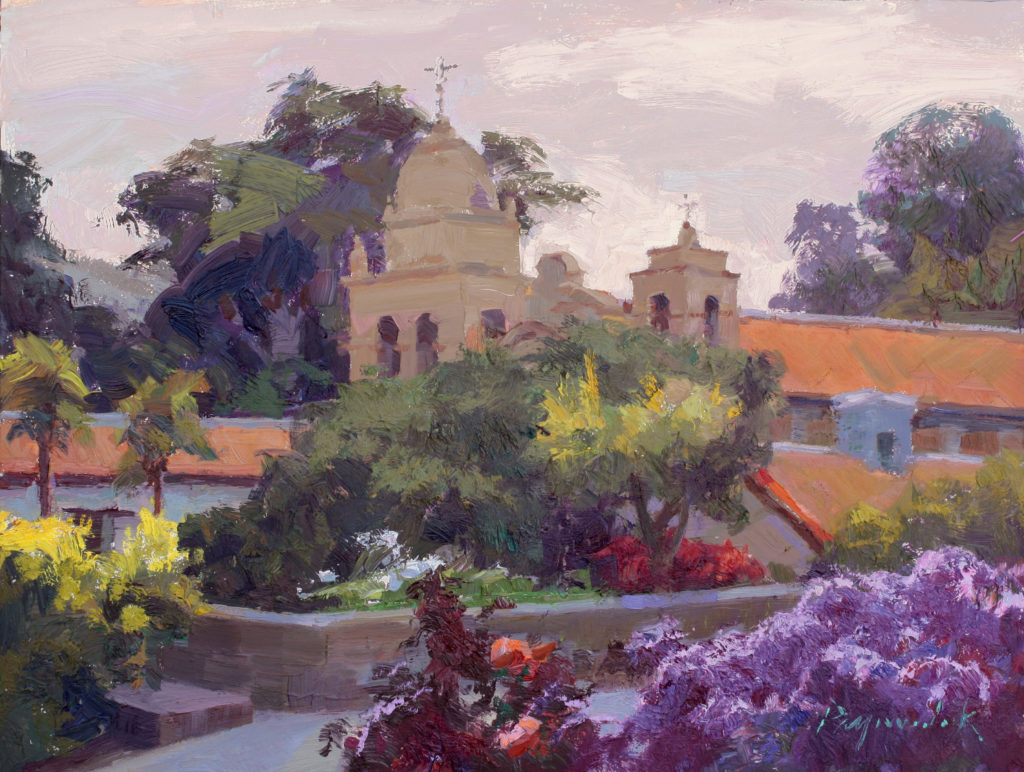
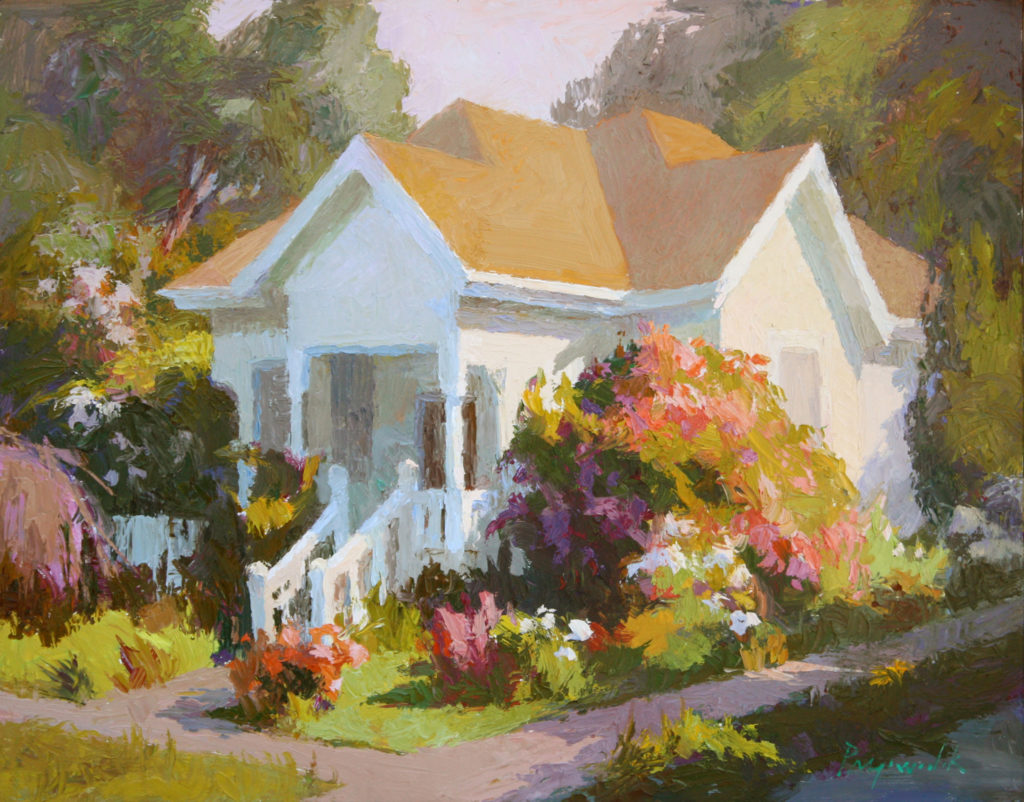
I try to paint the light key of nature, and color is important in my paintings. If it is the right color, it is the right value, hue, and saturation. Most plein air painters focus on value, composition, and edges, which are all important. I feel color is of equal importance as value.
People say color cannot be taught as it is personal. Hensche demonstrated that it can be taught, and that there is just no color instruction. Of course, if my husband and I painted the same scene, we would use different colors, but we would be relating all the colors to one another. ~ C.P.
To learn more about light keys, check out Camille’s art video workshop, “A Colorist’s Guide to Painting” >>>
.
Visit EricRhoads.com to find out all the amazing opportunities for artists through Streamline Publishing, including:
– Online art conferences such as Plein Air Live
– New video workshops for artists
– Incredible art retreats
– Educational and fun art conventions, and much more.
> Subscribe to Plein Air Today, a free newsletter for artists
> Subscribe to PleinAir Magazine so you never miss an issue

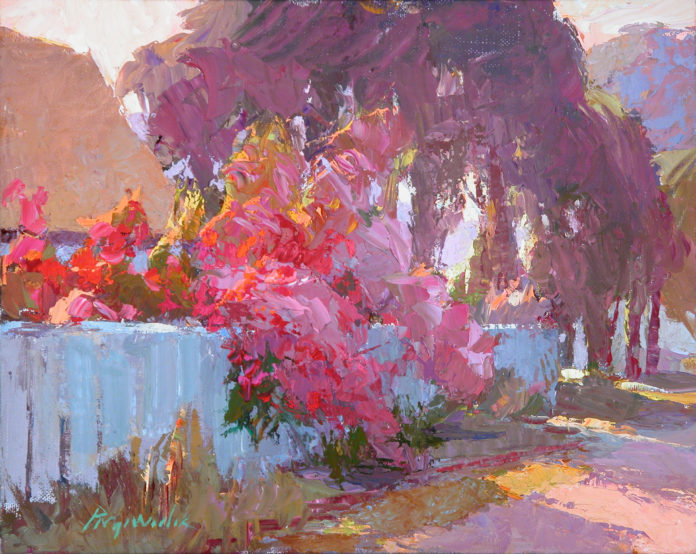

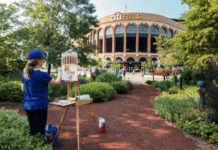


[…] 1947) “Flowers at Sunset,” 2012, Oil on panel, 8 x 10 in., Private collection (Related: How to Paint Like Monet, by Camille Przewodek) 15. SARA JANE REYNOLDS (b. 1948), “Fallen Petals,” 2017, oil on […]
Camille does it again! She lays that first color down with no explanation of how she chose it. Her subject has a grey roof, if I recall, yet she paints it orange/rust, I think. And she never says how she came to that hue. I would appreciate, in order to understand, a visual and word explanation. It would allow me to figure it out and learn it. How did hensche explain it?
Thanks for listening.
Pam Geiger
Hi Pamela! I think it’s probably difficult to include every choice an artist makes in something like a blog post here – you’ll find much more instruction from Camille in her workshop: https://lilipubsorders.com/products/camille-przewodek-a-colorists-guide-to-painting. Thank you for being a part of the plein air community! Happy painting!
Pam, I agree completely. Her answer to that question seems to be “it takes years and years to learn color”. It doesn’t. You can get better over the years no doubt. But a knowledgeable and good instructor—just one for example, Marco Bucci—can convey the basic concepts of applied color theory in a few hours or days with exact reasons for everything they do. I spent many frustrating hours and money listening to people like her making color sound elusive and the secrets only known to a few. Utter nonsense. All illustrators learn the same color theory basics in good degree programs and like music theory, it’s not some mysterious, secret knowledge that takes years and years to learn.